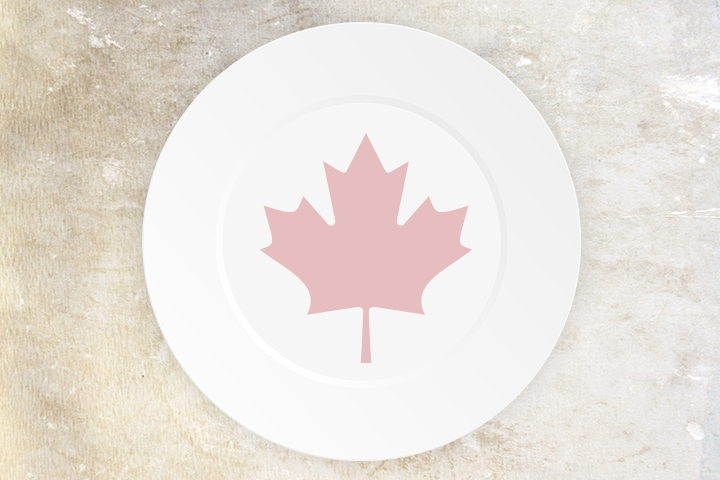The road to Rio is paved with good nutrition for thousands of athletes, including those on Team Canada.

An Olympic diet will vary vastly depending on body type, age, and sport. A cyclist, for example, may need 5,000 calories a day while a diver may take in less than 2,000.
One of her clients is Canadian cyclist Hugo Houle. His daily food intake has included:
- Caffeine
- Energy gels
- Smoothies (1 cup frozen fruit + 1 banana + 1 cup regular milk + 175 g of Greek yogurt + 2 scoops of whey + protein)
- Two slices of multi-grain bread + porridge + a banana + frozen berries
- Two cups pasta
- 120 g of cooked meat or lean fish
A dietitian’s job at the Olympics
Olivier was the first registered dietitian to travel with the Canadian Olympic team during the 2006 Torino Games, then followed it up with the Beijing and Vancouver Olympics.
The nutrition team has expanded over the years from one to now four Canadian dietitians in Rio. Three work with individual teams and one oversees everything.
Ahead of the Games, the lead dietitian informs the Olympic Committee of all the Canadian athletes’ diets. The goal is to ensure their nutrition needs will be met and their specific food plans can be replicated as much as possible.
Most of Olivier’s time at the previous Games was spent in the “humongous” cafeteria, where she’d help the athletes figure out what they should eat.
“You’re there to help and not really change what they’re doing. You might suggest things. But it’s really not the time to try new stuff,” Olivier explained.
She would, however, help if gastro-intestinal issues arise.
“For the Olympics, normally the food is really, really good. The problem is the amount. They cook so much 24 hours a day that sometimes the athletes get bored a little bit because it can end up tasting a bit the same.”
Canadian synchronized swimmers Karine Thomas and Jacqueline Simoneau, who are big fans of snacking on watermelon, don’t mind the selection this year.
“The cafeteria is offering a lot of variety in the fruit and vegetables department,” said Thomas. “And the proteins of choice are beef, chicken and, fish — mostly salmon. So I’d say most do a combination of all those things.”
Fun fact: they say the Nutella packets are very popular. The hazelnutty spread is served on toast.
READ MORE: How much sugar is in Nutella? Canadian doctor decodes what’s in the hazelnut spread
There’s also a separate athletes’ lounge, where the players can fix themselves something — “whether it’s a sandwich or a bowl of cereal,” Olivier added.
“We really found that it’s really helpful for athletes to be able to do that once in a while… Just being able to make that decision gives them control.”
For rugby sevens player Hannah Darling, nutrition is “a huge thing” and helps with her goal to be as lean as possible while still maintaining her weight, which she needs on the field.
Pre-game diet
The Olympic diet for her and her bronze medal-winning teammates includes carb-loading with a lot of pasta, which Darling says helps fuel them.
She typically takes about two fists full, a modest portion compared to some of her other teammates’ unique requirements.
“I’ve seen my roommate eat bowls after bowls after bowls of pasta and she’s tiny. I don’t know how it can fit into her body.”
Of course those hefty meals are eaten alongside intense fitness regimens. Closer to game time, Olivier said you usually “eat more than you train.”
Take Adam van Koeverden, for example. An Olympic gold, silver and bronze medallist for Team Canada in kayaking, he was in the water two times a day and in the gym three times a week leading up to Rio.
“Our sessions get shorter, the frequency goes down but they’re no less intense,” he told Global News. “Kayaking is a full-body workout.”
READ MORE: Adam van Koeverden willing to ‘paddle through s***’ for Canada
Because he trains so often, he eats four to five meals per day. Olivier has seen some athletes in similar situations eat six times a day.
Here’s a rundown of van Koeverden’s diet:
READ MORE: How Michael Phelps’ diet changed in the past 8 years
Canadian swimmer Kylie Masse, who won the bronze medal in the women’s 100-metre backstroke on Monday, admits the strict diet of “regimented protein and carbs” can sometimes be a challenge.
“It’s more difficult when you’re not home with the foods that you’re used to,” she said. “But it’s something you have to adjust to.”
Post-game binges
When asked if she’ll indulge once competition is done, Masse’s answer was a resounding yes.
“I’ll definitely be going to McDonald’s after our relay. I think we all will.”
She won’t have to go far for that. The chain sponsors the Games, and offers free food for Olympians.
On Saturday, Australian badminton player Sawan Serasinghe shared a photo of his massive post-Olympic McDonald’s spread.
Even though fast food is probably not the first thing that comes to mind when you think of an Olympian’s diet, the chain is reportedly a common place to hit after competitions are over.
Olivier said it’s especially popular with foreign athletes who live in places where a specific restaurant is expensive or not available.
READ MORE: What do Olympic athletes love more than medals? McDonald’s, apparently
Sweets are a big post-competition pleasure. It’s what Darling craves most as well.
“I want a doughnut and sweets and my mom’s homemade baking,” the 20-year-old rugby player confessed.
READ MORE: Why you crave sweets post-workout
The Ontario native will sometimes get her mom to ship her homemade cookies and brownie’s to Victoria, where she now lives.
For now, she gets her sugar fix from peanut M&Ms.
“Everyone needs a little bit of indulgence.”
With files from Carmen Chai, Global News; Graphics created by Janet Cordahi, Global News










Comments